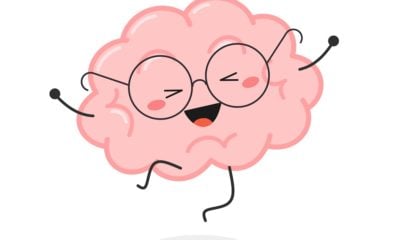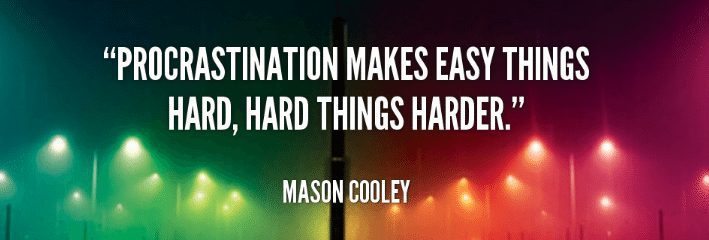The Roller Coaster of the 6 Basic Human Emotions
Although there is no census definition of the term ‘emotion’ in the psychology community, it is often described as episodic, synchronized, and temporary changes in affect or the feeling of state.
It reflects our quick ability to observe objects and situations in our environment and then adapt our behavioral and physiological responses to that stimuli.
This process involves multiple systems coordinating, like human physiology, our brains, behavior, and the conscious experience.
In short, emotions are hard to define, hard to explain, and frankly, they can be a bit of a mess to go through sometimes.
One thing that most psychologists agree on is the Basic Emotion Theory and the six basic human emotions (all other emotions are a subset of these) it describes:
- Anger
- Happiness
- Sadness
- Disgust
- Surprise
- Fear
Those who disagree with Basic Emotion Theory believe instead that a person’s emotions stem from “core affect,” which is the fluctuating level of pleasant or unpleasant arousal.
They believe that emotions are not discrete and able to be narrowed down into specific units.
Arousal, in this sense, means the intensity with which a person feels the pleasantness or unpleasantness (known as valence) of an event or situation.
We have many words that we use to describe the varying ranges of our emotions, for instance, you might be “bummed” you broke a nail, sad that your lunch date got canceled, gutted after a tough conversation with your sisters, or sorrowful over the death of a loved one.
These all stem from sadness, but the intensity varies, so the emotion is arguably different.
It gets even more complicated because people are subjected to stimuli all day long that change their emotional state.
It is unsettling for sure when we feel different and intense emotions in a short period.
“The emotional brain initiates pre-programmed escape plans, like the fight-or-flight responses. These muscular and physiological reactions are automatic, set in motion without any thought or planning on our part, leaving our conscious, rational capacities to catch up later, often well after the threat is over.” — Bessel Van Der Kolk, The Body Keeps the Score: Brain, Mind, and Body in the Healing of Trauma
Life is a roller coaster of emotions
Have you ever been so excited to ride on a roller coaster?
Maybe you stood in the line with anticipation and excitement, only to sit down and have the bar latch over you before becoming anxious.
Then perhaps that anxiety grew and turned into fear as your car slowly climbed the longest uphill stretch you have ever seen (the clanking noise of the wheels and gizmos making it even more unsettling).
Did your heart almost stop from fear as it rocketed down into a giant drop, only to increase into whipping around quickly while also being upside down?
Did you open your eyes or keep them closed?
Were you feeling exhilaration and invincibility yet, or did that not start until you coasted to a stop and wanted to go again?
Or maybe you never got there and got off that thing in tears, and decided roller coasters were not your thing.
The average roller coaster ride lasts for 112 seconds.
Think about how many emotions you experience about this one thing in the time it takes to wait in line and ride it.
The emotional life of a human is the equivalent of a roller coaster… only worse because the days last longer than a 112-second ride!
You could wake up happy and excited about your day and then something could happen and make you angry.
A few hours later, you could get the best news of your life.
A little while after that, you might have a disagreement with a family member that leaves you sad.
Add into the mix mild traffic annoyances, rude people in the store, and stress at work, and it is easy to see the correlation between life and roller coaster.
Think about how many emotions you cycle through in a single day, and it is no wonder you might be feeling a little exhausted.
There is hope, though, and the first step is understanding that it is normal for people to experience emotions quickly and temporarily.
Remember, it’s in the definition, so don’t beat yourself up if you feel like you shouldn’t be experiencing so many emotions in a day!
(However, if you are genuinely concerned that you are having rapid mood swings, in the absence of stimuli, and want to check in with a licensed mental health professional, please know there is nothing wrong with that.
Getting a therapist to help me understand trauma was the best thing I ever did for myself).
“Life can be like a roller coaster… And just when you think you’ve had enough, and you’re ready to get off the ride and take the calm, easy merry-go-round… You change your mind, throw your hands in the air and ride the roller coaster all over again. That’s exhilaration…that’s living a bit on the edge… that’s being ALIVE.” ― Stacey Charter
How to process our daily spectrum of emotions
Not only is it normal for people to experience different emotions throughout the day, but those emotions mean we are living life.
We are experiencing situations and events that move us and make us feel something.
They add a little color to the pages of our lives.
A negative emotion might happen because something bad happens to us, but that doesn’t make the emotion itself bad.
A negative emotion is classified as one that has a harmful person-environment relationship and the adaptational consequences of the way we handle them.
Emotions are also subjective, so how one feels about something is not the same as someone else.
We have to feel all the feelings because our brains are wired that way!
What is important to note is how it affected you, and how you regulated your emotions.
Trying to ignore things like anger and sadness can make things worse.
According to Crystal Raypole, over at Healthline doing those things, either consciously or subconsciously, can contribute to mental and physical health symptoms, including:
- anxiety
- depression
- sleep issues
- muscle tension and pain
- difficulty managing stress
- substance misuse
“Your emotions make you human. Even the unpleasant ones have a purpose.
Don’t lock them away. If you ignore them, they just get louder and angrier.” ― Sabaa Tahir, A Torch Against the Night
So, feel whatever it is you need to feel, but also identify it.
Give it a name and try to learn why you feel the way you do.
Once you know what it is you are feeling, which is sometimes harder to identify than it sounds, you can start asking yourself the even tougher questions like, “How do I want to respond to these feelings and is that the best way to get through it?”
These kinds of questions help you reframe your thoughts and react a little differently than your instincts are telling you.
There are some physical activities that can help us handle our emotions better, too!
These include things like meditation and breathing exercises, keeping a journal, taking a walk, or pet your dog.
Heck, pet your cat or whatever pet you may have if it will let you (except for maybe a goldfish, I hear those are calming to watch just swim around).
Being calm is another great way to help learn to regulate your emotions, and one way to be calmer, in general, is to monitor your stress levels.
When we are stressed, our emotions tend to try to swallow us whole, especially the ones that are brought on by unpleasantness.
Luckily, there are ways we can combat stress too; try taking that walk I mentioned earlier outside!
Make sure you are getting enough sleep and spending time doing things you like.
Ultimately, positive and negative emotions are going to come at us all day every day, sometimes on a bigger scale than others.
It is ok to know that and develop ways to regulate your emotions so you aren’t always feeling like you are going from roller coaster to roller coaster.
Don’t be hard on yourself for feeling things deeply and also don’t be afraid to get some help from someone if you are feeling exhausted or overwhelmed.
A therapist will be able to walk you through more ways to reframe your thoughts and give you the tools to manage your emotions healthily.
“Crying does not indicate that you are weak. Since birth, it has always been a sign that you are alive.” ― Charlotte Brontë, Jane Eyre











